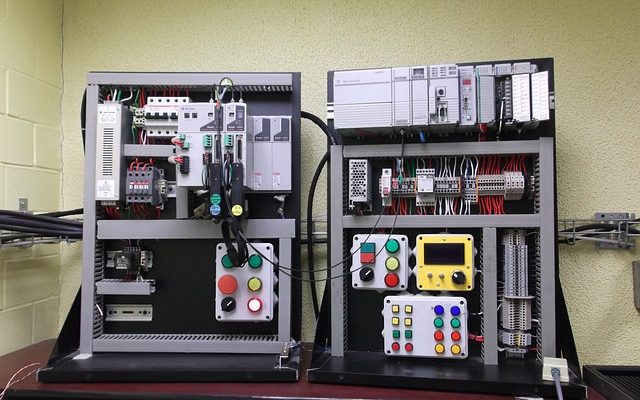Modern automation depends on precision and adaptability, not just the convenience of plug-and-play systems. Industrial plants and production facilities often discover that standard controllers can’t fully address the unique rhythm of their operations. That’s where a custom PLC design reshapes efficiency—tailoring each layer of control logic, hardware, and interface to fit the process it manages.
Contents
Configurations Built Around Unique Process Requirements
A custom PLC system begins with understanding how each operation behaves under real conditions. Unlike off-the-shelf systems that offer a fixed set of functions, a tailored configuration adapts to specialized workflows such as batch processing, sequential control, or safety-critical tasks. Engineers design the PLC architecture to synchronize with the plant’s operational flow, whether it’s food packaging, chemical blending, or automated assembly.
This level of customization allows the PLC programming to reflect real process timing and dependencies. Control system integrators map the design around sensors, actuators, and network communication protocols specific to each site. The result is a control platform that responds precisely to operational triggers instead of forcing the process to adapt to generic control parameters.
Programming Structured for Site-specific Operations
Understanding what is PLC programming is essential to seeing how customization changes system behavior. Standard systems often rely on universal code blocks, but a custom PLC is written line by line to match each machine’s purpose. Engineers fine-tune ladder logic, function block diagrams, or structured text to eliminate unnecessary routines and reduce processing lag.
At a PLC programming company, each control sequence is developed through field testing and simulation. That ensures the logic communicates seamlessly with sensors and drives used in that particular facility. The goal is not just automation but predictable, repeatable performance under every operating condition unique to that site.
Hardware Selected to Match Environmental Demands
Different industries expose their control systems to extreme variables—heat, vibration, moisture, or corrosive materials. Custom PLCs are designed with components capable of tolerating these stresses. Engineers may select sealed enclosures, industrial-grade connectors, or Rockwell Allen Bradley PLC modules rated for specific temperatures or electrical loads.
While standard hardware may suffice in stable environments, specialized facilities demand endurance. Control system integrators often mix hardware from multiple manufacturers to optimize resilience and performance. Each piece of hardware—from I/O modules to communication cards—is chosen to support both function and longevity.
Integration Seamlessly Aligned with Existing Equipment
Industrial plants rarely start from scratch; they expand and evolve. A custom PLC design allows integration with legacy systems and older machinery without forcing costly overhauls. Engineers configure input and output mapping to communicate through existing protocols such as Modbus, EtherNet/IP, or Profibus.
This compatibility extends beyond simple communication. A PLC programming company ensures that data flow between old and new equipment maintains synchronization, enabling operators to manage the entire system from a unified interface. It’s this level of tailored integration that makes a custom PLC both flexible and future-ready.
System Scalability Designed for Future Expansion
A well-built control system should grow alongside production capacity. Custom PLC architecture includes scalability within its design—extra I/O slots, modular power supplies, and expandable communication networks. Plants planning for future product lines or automation upgrades can do so without replacing their entire control infrastructure.
Control system integrators use scalable network topologies that allow additional devices to be added through simple configuration updates rather than extensive rewiring. This foresight in PLC programming reduces future downtime, making expansion projects more cost-effective and less disruptive to operations.
Interface Layouts Simplified for Operator Efficiency
Human-machine interfaces (HMIs) bridge the gap between technology and daily operation. Custom PLC systems feature interface layouts built around how operators actually use the system. Screens are arranged to highlight the most critical data first, minimizing time spent searching for alarms, flow rates, or temperature readings.
Standard HMIs often clutter displays with unused data or generic icons. In contrast, custom designs remove distractions and use color-coded visual cues for faster response times. Operators benefit from intuitive layouts that support decision-making without technical confusion, boosting both productivity and safety.
Diagnostics Developed for Faster Troubleshooting
Downtime costs more than repairs; it disrupts entire production schedules. Custom PLC systems incorporate diagnostic tools specifically designed to pinpoint faults quickly. Engineers embed logic that monitors system health, power irregularities, and communication drops in real time.
These diagnostic functions go beyond basic alarms. Through targeted PLC programming, maintenance teams can identify the exact cause of a malfunction—whether a sensor fault, timing error, or data interruption. This precision in troubleshooting shortens recovery time and keeps production on schedule.
Performance Reliability Enhanced Through Custom Logic
Reliability separates advanced automation from reactive systems. Custom PLCs operate with logic written to handle specific failure modes, ensuring smooth transitions during faults or restarts. Unlike standard systems that follow fixed routines, tailored logic adapts dynamically to real-world variations in voltage, timing, or load.
Control system integrators use Rockwell Allen Bradley PLC platforms and similar technologies to create robust fault recovery routines. Each line of logic is tested under simulated failures to confirm performance stability. This dedication to reliability gives operators confidence that their systems will maintain continuous performance even under demanding industrial conditions.




